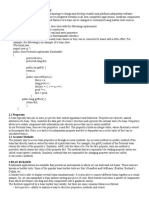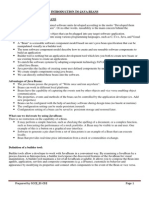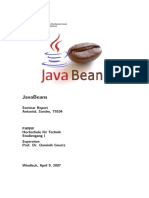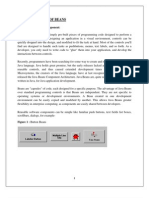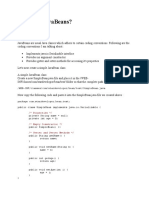0% found this document useful (0 votes)
18 views17 pagesUnit - 3
The document provides an overview of Java Beans, which are reusable software components designed for various environments, emphasizing their architecture, advantages, and disadvantages. It covers key concepts such as introspection, properties, events, persistence, and the Java Beans API, along with design patterns for properties and events. Additionally, it includes an example illustrating the use of Java Beans and their components, highlighting the importance of customization and serialization.
Uploaded by
hike.prajiCopyright
© © All Rights Reserved
We take content rights seriously. If you suspect this is your content, claim it here.
Available Formats
Download as PDF, TXT or read online on Scribd
0% found this document useful (0 votes)
18 views17 pagesUnit - 3
The document provides an overview of Java Beans, which are reusable software components designed for various environments, emphasizing their architecture, advantages, and disadvantages. It covers key concepts such as introspection, properties, events, persistence, and the Java Beans API, along with design patterns for properties and events. Additionally, it includes an example illustrating the use of Java Beans and their components, highlighting the importance of customization and serialization.
Uploaded by
hike.prajiCopyright
© © All Rights Reserved
We take content rights seriously. If you suspect this is your content, claim it here.
Available Formats
Download as PDF, TXT or read online on Scribd
/ 17







